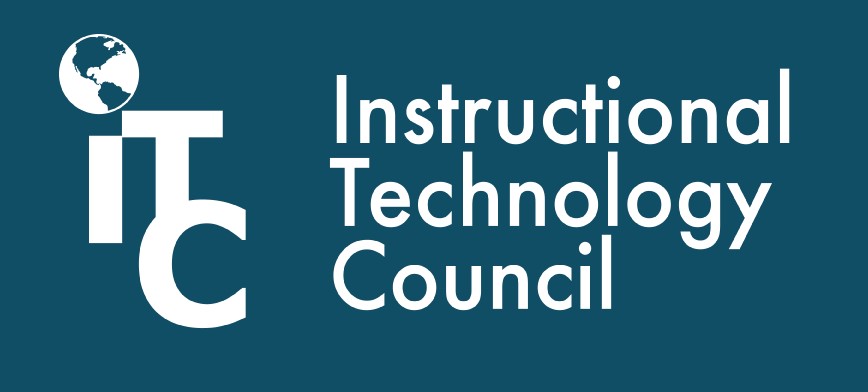First a caveat. Predicting the future is hard. Predicting the future development of learning management systems (LMS) is very hard — even for LMS developers.

There’s been a great deal of hand-wringing in education since November 2022 when ChatGPT was released to the world. The full impact of these AI Chatbots on distance education is yet to be determined. It’s the latest in the ongoing series of “the sky is falling” crises that education has weathered over the years. Calculators, word processors, virtual worlds, Wolfram Alpha, MOOCs and more were hyped to be the end of education as we know it. None of them actually were. It’s also notable that education didn’t shrivel up and die in response to the first natural language chatbot, named Eliza, developed at MIT in 1966.
Editor’s note: The Instructional Technology Council continues its series of articles focusing on the anticipated impact of distance learning over the next 10 years.
Eight possible uses of AI in an LMS
Only eight uses? Yes, only eight, because 88 would be too many in one sitting. Let’s examine some possibilities about how artificial intelligence (AI) might impact an LMS in the future.
- Writing quiz questions can be a tedious exercise for educators, almost as bad as taking the quiz is for the students! That’s a joke (maybe). Try a ChatGPT prompt like this: “Write three multiple choice questions, each with four possible answers, about the concept of opportunity cost in a cost accounting course, and indicate the correct answer for each.” You can do that now outside the LMS and then copy and paste, but in the future it might be just another field in the quiz engine of your LMS. (See question examples.)
- Some D2L Brightspace customers are working to develop a custom homepage widget that can perform a tutoring function inside the LMS using the ChatPGT open API. This will likely be in use very soon.
- Another place to embed a chatbot in the LMS is in the content or lessons tool. Try a ChatGPT prompt similar to this: “Write a lesson plan for classroom discussion about the Enron scandal where students will then complete an out-of-class assignment of writing a 4-page paper. This is for an auditing class for senior accounting students in a bachelor’s degree program.” More detail could have been provided, but the results were very good, with only a few edits needed. (See the lesson plan.)
- There are already AI chatbots that can be trained on your particular text-based resources, such as Cody and Humata. Imagine your own personalized chatbot in your online management accounting course that can answer questions about how to solve for economic order quantity (and why to do so) 24 hours a day. Real-time assistance can be available to your students any time of the day or night, trained on the information that you provide it.
- Building personalized learning paths has been a bit of a holy grail in online education. AI has the ability to make those paths achievable.
- Language translation capabilities of AI might allow students who speak different languages to be together in the same virtual classrooms.
- Machine learning algorithms might be used to scan through course content looking for areas of bias, unnecessary complexity, or ambiguity to alert the instructor of potential problems before they occur.
- At D2L, web accessibility is a forethought, not an afterthought. AI has the ability to improve speech-to-text applications even when the speech is difficult to understand. Descriptive videos could be AI-powered to relieve humans of the tedious work of creating the descriptive audio track for a learning video. AI-driven accessibility checkers will likely be able to scan the HTML code for issues and recommend practical fixes or possibly apply the fix itself. We can dream, right?
AI is already used in D2L Brightspace
A Brightspace feature introduced in 2022 provides the ability to auto-generate closed captions for all videos uploaded into Brightspace. This caption generation is accomplished through the use of AI. It is a speech-to-text bot that can create usable captions within a few minutes, and there is also the ability to edit the captions for accuracy and timing.
There are several other tools within Brightspace that are “AI-like.” Examples include the analytics tool that helps educators identify which students are on track and which ones are at risk of falling behind in their studies, and the release conditions that are available throughout the system. Although not exactly built with AI tools, they are ripe for the addition of AI to build even more powerful tools.
Are education jobs at risk?
Some faculty have expressed concern about being replaced by AI platforms. It’s possible that academic advisors should be much more worried. A trained AI chatbot would likely make accurate suggestions of the courses that a student should take next semester to stay on track for graduation. This is a fairly routine task (advisors will disagree, most likely), but this could allow advisors to concentrate on various student-related supports that AI might not be as skilled at performing. If AI can replace your job, it probably will.
Just a reminder. All of this is speculation. A person could go broke betting on any one of these things coming true. The main thing we can know for certain about how AI will impact education is that it will get more exciting before it gets more dull.
In closing, let’s hear from John Baker, the CEO of D2L: “It’s important to remember that no matter how clever it may appear to be, technology cannot do our learning for us. Whatever tools you employ to accomplish it, learning is a human endeavor. At D2L, we have always built our technology and platforms on this idea.”

